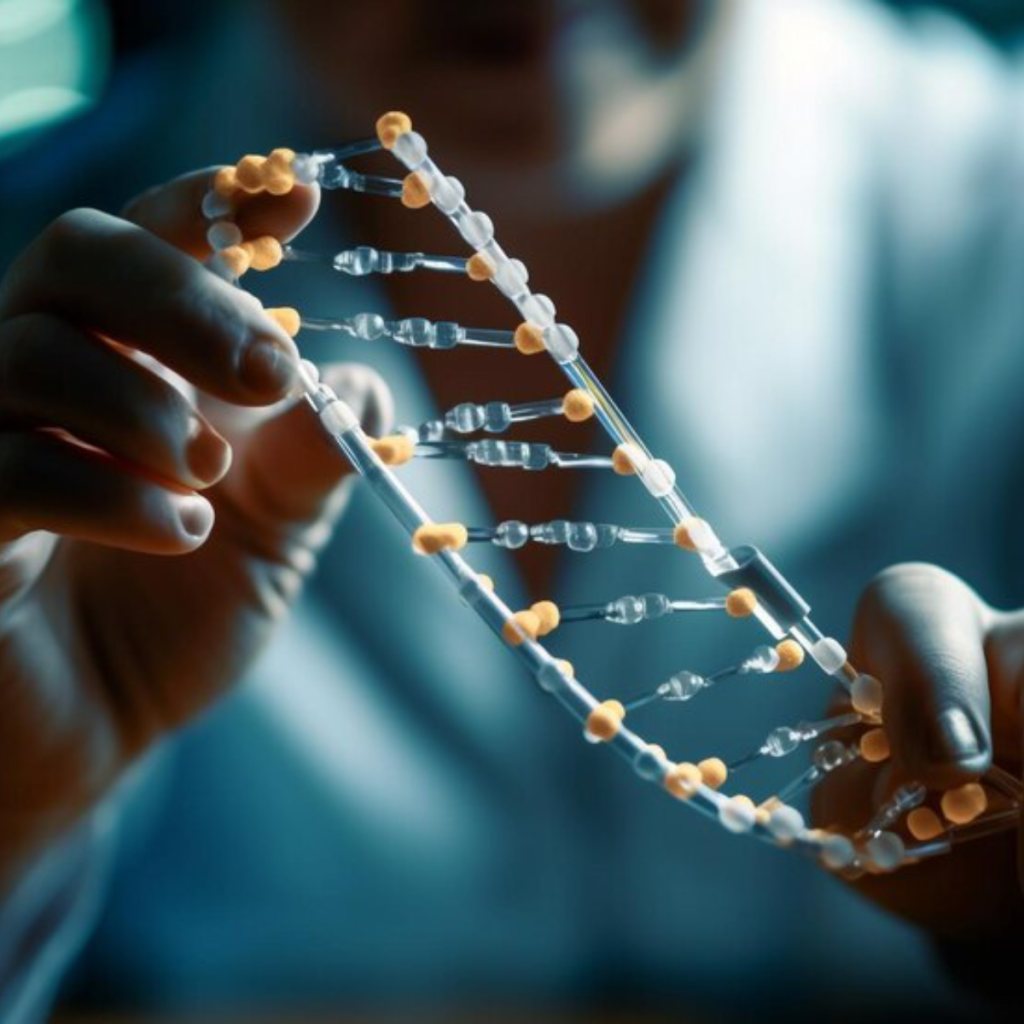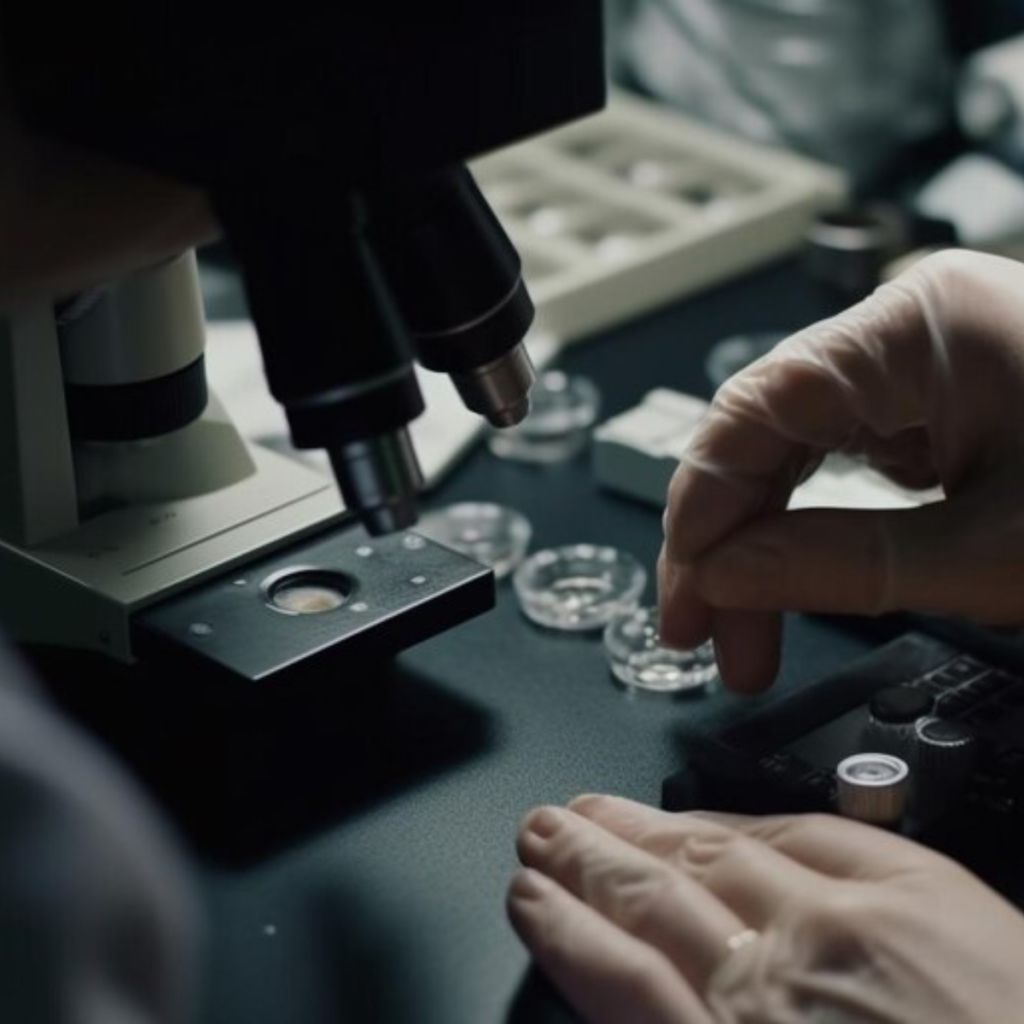DNA Repair: Life Extension Explained
September 13, 2023

Welcome, dear reader, to the fascinating world of DNA repair and life extension! This isn't your typical bedtime story, but a tale of the microscopic heroes within us, working tirelessly to keep us young and healthy. So, buckle up and prepare for a journey into the heart of our cells!
Our story begins with DNA, the blueprint of life. This molecule, coiled up inside each of our cells, contains the instructions for making everything in your body. But like any blueprint, it can get damaged. That's where DNA repair comes in, a process as vital to our survival as breathing. And it's not just about fixing what's broken; it's also about extending the quality and length of life. Intrigued? Let's dive in!

The Basics of DNA Damage
Before we delve into DNA repair, let's first understand DNA damage. Imagine your DNA as a long, twisted ladder. Each rung is a pair of molecules, called bases, that fit together perfectly. But sometimes, things go wrong. A base might get lost, or the wrong one might sneak in. This is DNA damage, and it's more common than you might think.
Damage can come from many sources. Sunlight, radiation, and certain chemicals can harm DNA. Even normal cellular processes, like metabolism, can cause damage. And while our cells are pretty good at fixing these mistakes, they're not perfect. Over time, unrepaired DNA damage can lead to aging and disease. But don't despair! Our cells have a secret weapon: DNA repair.
Types of DNA Damage
There are many types of DNA damage, each with its own unique challenges for repair. For instance, there's base damage, where a single base is altered. Then there's a DNA strand break, where the entire DNA ladder is snapped in two. And let's not forget about crosslinks, where two DNA strands get stuck together. Each of these damages requires a different repair strategy.
And then there's replication errors. When a cell divides, it must first copy its DNA. But this process isn't foolproof, and mistakes can happen. These replication errors can lead to mutations, which are permanent changes in the DNA sequence. But fear not! Our cells have ways to fix these errors too.
The Magic of DNA Repair
Now, let's turn our attention to the star of our story: DNA repair. This is the process by which our cells fix damaged DNA. There are several different repair pathways, each specialized for a different type of damage. It's like having a team of repairmen, each with their own set of tools, ready to fix whatever breaks.
But DNA repair isn't just about fixing damage. It's also about preventing it. Some repair pathways can detect and correct errors during DNA replication, before they become permanent mutations. This is called DNA proofreading, and it's one of the ways our cells maintain the integrity of our genetic information.
Base Excision Repair (BER)
One of the most common repair pathways is base excision repair, or BER. This process fixes small, non-distorting base damage. It's like a spell-checker for your DNA, fixing typos before they cause problems.
Here's how it works: First, an enzyme called a DNA glycosylase recognizes and removes the damaged base. Then, other enzymes come in to fill the gap and seal the DNA strand. It's a quick and efficient process, and it happens thousands of times a day in every cell in your body.
Nucleotide Excision Repair (NER)
For larger, distorting damage, our cells use nucleotide excision repair, or NER. This process can remove a whole section of damaged DNA, like cutting out a paragraph with a typo and replacing it with the correct text.
NER is a bit more complex than BER. It involves several different proteins, working together to recognize the damage, cut out the damaged section, and fill in the gap. It's a more involved process, but it's necessary for dealing with larger, more disruptive types of damage.
Life Extension and DNA Repair
So, how does all this relate to life extension? Well, as we age, our DNA accumulates damage. This can lead to cell death, tissue degeneration, and the onset of age-related diseases. But by enhancing our cells' ability to repair DNA, we might be able to slow down the aging process and extend the healthy lifespan.
Research in this area is still in its early stages, but the results so far are promising. Studies have shown that improving DNA repair can extend the lifespan of yeast, worms, and mice. And in humans, mutations in DNA repair genes are associated with premature aging syndromes, suggesting that normal DNA repair is essential for longevity.
The Future of DNA Repair and Life Extension
Looking forward, the field of DNA repair and life extension is ripe with possibilities. Scientists are exploring ways to enhance our natural repair pathways, develop drugs that can repair DNA, and even use gene therapy to correct mutations. It's an exciting time to be in the field, and the future looks bright.
But while we wait for these advances to become a reality, there's plenty we can do to support our DNA repair processes. Eating a healthy diet, getting regular exercise, and avoiding harmful exposures like smoking and excessive sun can all help keep our DNA in top shape. So, take care of your DNA, and it will take care of you!

Conclusion
And so, dear reader, we come to the end of our journey into the world of DNA repair and life extension. It's a complex and fascinating field, full of potential for improving human health and longevity. But it's also a reminder of the incredible machinery at work within our cells, keeping us healthy and alive.
So, the next time you're out in the sun, remember the tiny repairmen inside your cells, fixing the DNA damage caused by those UV rays. And when you're enjoying a healthy meal, think of the nutrients supporting your DNA repair processes. It's a microscopic world inside us, but it has a big impact on our lives. Here's to the heroes of DNA repair!

 Back to Blog
Back to Blog